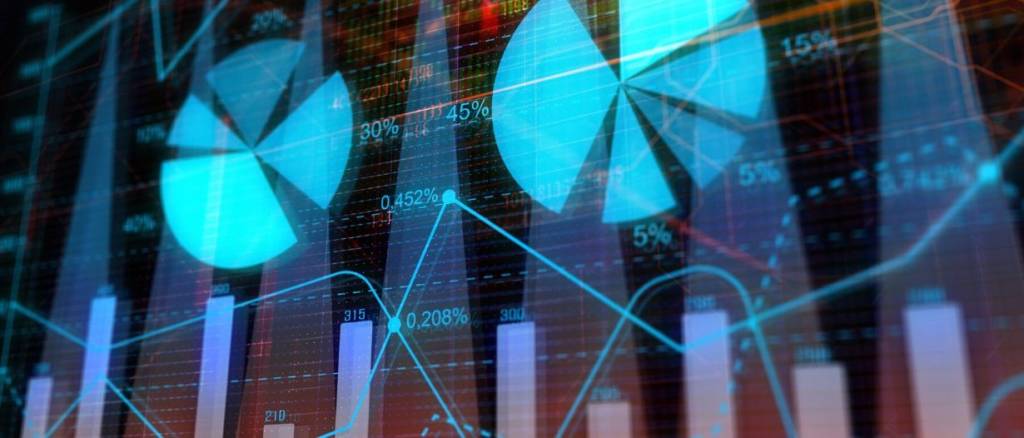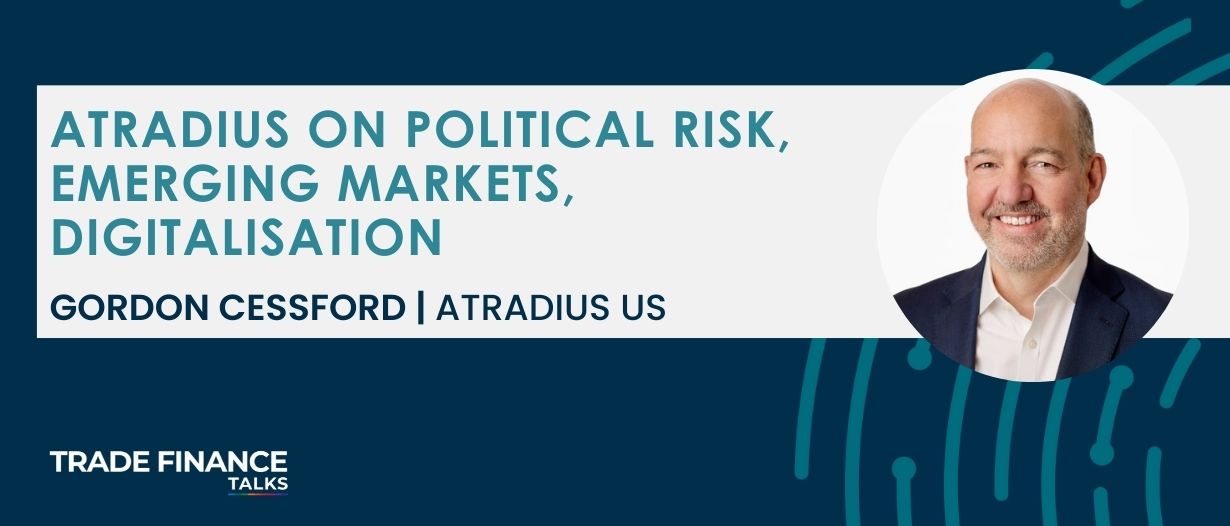World politics, COVID-19, and hiking inflation rates have all had a part to play in the trade credit insurance sector.
Whether it has been the deterioration of geopolitical stability and subsequent increase in political risk, or the disruption of the supply chain, contributing to a rise in commercial risk, masse uncertainty has rippled through the industry.
To understand what all these interconnected facets really mean for the market, TFG’s Annie Kovacevic sat down with Gordon Cessford, president of Atradius US and regional head of Atradius in North America.
Could you tell us more about Atradius and what market it primarily deals in?
GC: Atradius operates in the private market sector and is a credit insurance arm of Grupo Catalana Occidente.
It provides trade credit insurance in addition to surety and collection services worldwide, with a presence in more than 50 countries around the globe.
Within the US, Atradius caters to all segments of the market, including small- and medium-sized enterprises (SMEs) in addition to multinational and bank businesses, with trade credit insurance, structured credit coverage, and a specialised collection offering.

How do private businesses differ from public?
GC: I believe the most important aspect is the underwriting or risk approach to the transaction.
For shorter tenors and private risk, there is a primary focus on credit profiles by analysing financial statements with additional scrutiny on the trade sector, trading experience between parties, and business track records.
Shifting to the public sector/longer tenors, I would consider the underwriting process more complex as one is entertaining risk beyond simple non-payment, i.e. credit facility, contract cancellation, and non-performance, which require additional scrutiny on country risk.
Here, there is more focus on aspects such as the strategic nature of the project, the rule of law, risk for arbitrary action, and the prospect’s experience in the market.
There would also be a review of the underlying contractual agreement as opposed to the short-term revolving transactions.
With public buyers or long-term insurance, there is often a third country or party risk to consider, including, but not limited to: subcontractors creating potential supply chain issues, sanctions, and geopolitical tensions.
How has the appetite for commercial and political risk been affected by COVID-19, the Russia-Ukraine conflict, and inflation?
GC: From a commercial perspective, there are several factors that have made an impact.
Ongoing global economic uncertainties, supply chain issues, inflationary pressures, the Russia-Ukraine conflict, and the aftereffects of the pandemic have meant a higher-than-usual level of interest in trade credit insurance. As a result, companies have been looking to mitigate their credit risks to an increased degree.
Our risk appetite remains broadly supportive, but we continue to monitor the Russia-Ukraine conflict’s direct impacts. In capital-intensive, highly leveraged sectors, we have seen a more hawkish stance from central banks in a bid to contain inflationary pressure.
Despite this risk aversion, tentative steps have been taken into emerging markets. Can you elaborate on why that is and what to expect?
GC: As global supply chains have evolved towards emerging markets, the credit insurance market has followed at the request of our clients.
Emerging markets are riskier as there is a scarcity of recorded trends to reference, but the opportunities and the investments make for more significant trades and additional potential to do business for customers and for us.
As we have an eye on all markets at all times, we can make educated decisions about where to invest more heavily to support our customers with local underwriters––these areas are usually in, or around, emerging market countries.

Is this in line with changes you’ve seen in the approach to ‘country risk’?
GC: Country risk is not just based on economic factors but also on political risk.
A country can be economically stable, but if the political landscape makes for difficult trades or additional hurdles to get invoices collected, it becomes higher on the risk scale for credit insurance countries.
Looking at the recent examples in Eastern Europe, we have had to take a number of swift actions to enable our customers can continue to do business in a suddenly volatile environment––all the while minimising risks for the client and credit insurance companies.
Country risk is a constantly moving playing field. Geopolitical events are an ever-present factor in risk assessments carried out by clients, banks, and underwriters. Atradius keeps a close eye on risks in a variety of industries and countries.
There are so many new developments within the credit insurance sphere, how have relationships with customers altered in response to this? Have priorities changed?
GC: Priorities have not changed, we put our clients ‘front and centre’ in terms of priorities. This will never change.
More widely, trade credit insurance’s core product has not changed in over 100 years. There is obviously more sophistication in underwriting and delivery, and we do see a move towards digitalised solutions and delivery to our clients.
Has this led to internal company restructuring to accommodate new customer and market needs?
GC: As an organisation, we are dynamic and fluid––we are always ready to pivot to meet our client’s needs.
We put focus on developing new ways of conducting business. Having said this, our customers are at the core of what we do, and we don’t want to disrupt that when it is not necessary. Instead, we look at ways to grow by developing new products or processes, ameliorating responses to unique needs and serving new markets.

In response to these market shifts, how has digitisation helped to create safer platforms and/or mitigate risk with deals?
GC: Digitalisation greatly shortens the amount of time it takes to receive, process, and return decisions to our customers.
Along with artificial intelligence (AI) and fintech platforms, businesses will soon be able to offer almost instantaneous protection to customers with a high degree of confidence.
Especially in a heavily competitive industry where time is of the essence, digitalisation will help provide our customers with a competitive advantage.
While we never want to fully remove the human eye and expertise that risk underwriters have developed over the years, technology will help us with efficiency and will allow us to tap into more sources for monitoring the credit stability of policyholders’ buyers.
Further to this, there is such a wealth of data available right now that it would be impossible for a person to digest and analyse on their own fully.
Digital tools will help us monitor all of these signals and will highlight what is worthy of our attention.
Hopefully, this will also allow us to find patterns and better forecast credit trends.
What does the future of trade credit insurance look like? How might it evolve or perhaps even devolve?
GC: That is a very interesting question! I do believe that the future of trade credit insurance is a bright one.
The industry has been around for over a century, and there are no reasons why it can’t be around for another century with the ongoing patterns of domestic business and international trade. Will it still look the same? Fundamentally, yes, although I think there will be a number of digital enhancements.




























